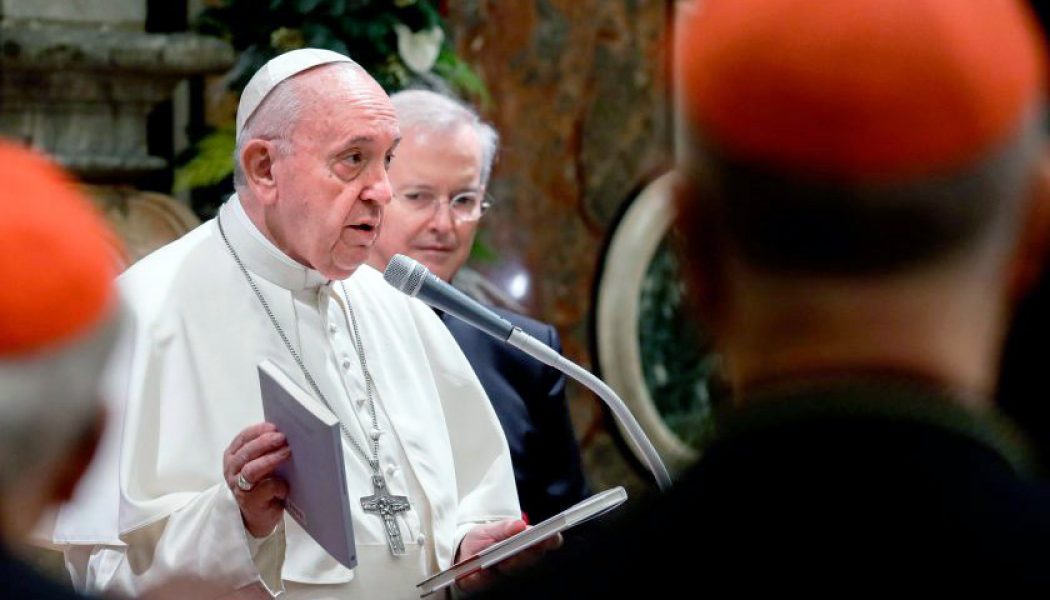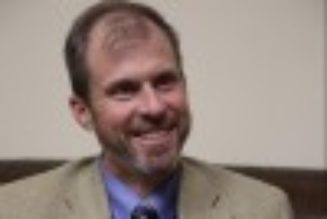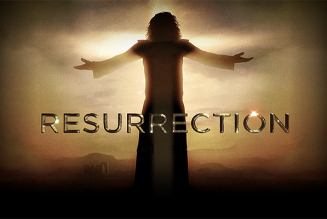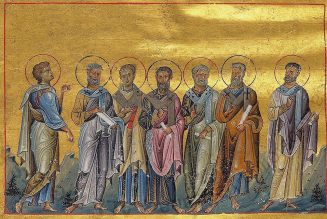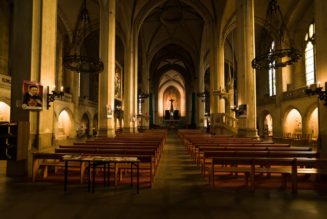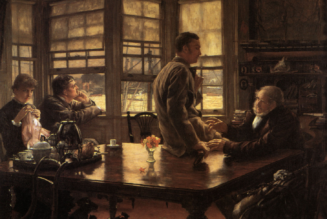
Pope Francis holds two books he presented as a gift to cardinals and bishops on the occasion of his Christmas greetings to the Roman Curia, Dec. 21, 2019, in the Clementine Hall at the Vatican. (Andrew Medichini/Pool/AFP via Getty Images)
‘Querida Amazonia’: On the Question of Married Priests, a Papal Pattern Returns
COMMENTARY: In Querida Amazonia, as in previous documents, clear questions were posed. Ambiguous answers were given, awaiting clarification by novel maneuvers.
Father Raymond J. de Souza
In regard to the magisterium of Pope Francis it’s not just what he teaches, but how.
In both Amoris Laetitia and in regard to capital punishment, the manner of magisterial teaching was novel. The pattern is now repeated with Querida Amazonia, the Holy Father’s post-synodal apostolic exhortation.
A Synod With a Predetermined Goal
The key question for more than two years has been whether or not the Holy Father would approve the ordination of married priests in the Amazon region.
That was the same story with Amoris Laetitia; two years before its release in 2016, Cardinal Walter Kasper was invited by Pope Francis to address the College of Cardinals on admitting the divorced and civilly remarried to Holy Communion. There was a lot of back and forth over the next two years, but when it all landed on the papal desk, that very question was there, waiting for his resolution.
Recall the back story on the Amazon synod. After the twin synods on the family in 2014 and 2015, the Holy Father suggested that the next ordinary synod in 2018 be devoted to the priesthood, where the question of celibacy could be raised. The synod council — elected by the bishops at the 2015 synod — voted that combustible topic down.
In 2017, Pope Francis announced the Amazonian synod, a “special assembly” that did not require any synod council approval and whose members would be entirely chosen by the Holy Father. A synod on the Amazon meant the question of married priests would be considered. Two years later, after a lot of back and forth, the question was on the Pope’s desk.
An Ambiguous Answer
What, then, is the answer to the question? Has the Holy Father decide to permit the ordination of married deacons as priests for the Amazon? The synod recommended it. Does the Holy Father approve?
The answer is ambiguous. Pope Francis hinted in both directions without offering a clear answer.
“The way of shaping priestly life and ministry is not monolithic; it develops distinctive traits in different parts of the world,” he wrote, seemingly in support of an exception to the rules for the Amazon (87).
“In the specific circumstances of the Amazon region, particularly in its forests and more remote places, a way must be found to ensure this priestly ministry,” he added (89). “Every effort should be made to ensure that the Amazonian peoples do not lack this food of new life and the sacrament of forgiveness.”
On the other hand, Pope Francis seemed to suggest that the solution to a lack of priests in the Amazon was not the ordination of married men, but a renewed missionary zeal.
“This urgent need leads me to urge all bishops, especially those in Latin America, not only to promote prayer for priestly vocations, but also to be more generous in encouraging those who display a missionary vocation to opt for the Amazon region,” he wrote (90).
The Holy Father then added this stinging rebuke to Latin American clergy in this footnote:
“It is noteworthy that, in some countries of the Amazon Basin, more missionaries go to Europe or the United States than remain to assist their own Vicariates in the Amazon region” (132).
Comfort abroad is apparently preferred to the difficulties of pastoral care at home.
The Holy Father left it at that, not offering a clear endorsement of the synod proposal.
A Back-Door Approval?
But perhaps he did endorse the proposal through a back door?
Before the 2018 synod on youth, Pope Francis promulgated a new apostolic constitution that governed the Synod of Bishops, Episcopalis Communio. That document introduced the new provision that “if it is expressly approved by the Roman Pontiff, the final document [of the synod] participates in the ordinary magisterium of the Successor of Peter.”
A non-papal document could ex post be declared part of the papal magisterium.
In the opening paragraphs of Querida Amazonia, Pope Francis writes:
“I would like to officially present the Final Document, which sets forth the conclusions of the Synod, which profited from the participation of many people who know better than myself or the Roman Curia the problems and issues of the Amazon region, since they live there, they experience its suffering and they love it passionately. I have preferred not to cite the Final Document in this Exhortation, because I would encourage everyone to read it in full” (3).
What does “officially present” mean? Does it mean that the Holy Father has expressly approved making the synod’s final document part of the magisterium? Does the synod’s recommendation for the ordination of married deacons as priests now become a decision with papal authority?
Given that those are all obvious questions, the ambiguous phrasing “officially present” must have been chosen in part for its ambiguity. Time will tell if some bishops appeal to that ambiguity in order to advance the ordination of married priests.
A Stealth Magisterium
In the case of Amoris Laetitia, Pope Francis, in a mammoth exhortation of some 60,000 words, never even referred to Holy Communion for the divorced and remarried. There was only an ambiguous footnote, interpreted in contradictory ways by different bishops. At one point, Pope Francis wrote a private letter to bishops in Buenos Aires saying that theirs was the “only interpretation.” The letter was leaked, a magisterium by stealth. Months later, it appeared in the official Vatican records as an “apostolic letter,” an ex post addition to the papal magisterium.
In regard to capital punishment, Pope Francis ordered a change in the Catechism of the Catholic Church to characterize capital punishment as “inadmissible,” a term chosen because it has no specific theological meaning, a novelty invented for this occasion.
Now in Querida Amazonia the pattern returns. Clear questions were posed. Ambiguous answers were given, awaiting clarification by novel maneuvers.
Father Raymond J. de Souza is the editor in chief of Convivium magazine.
